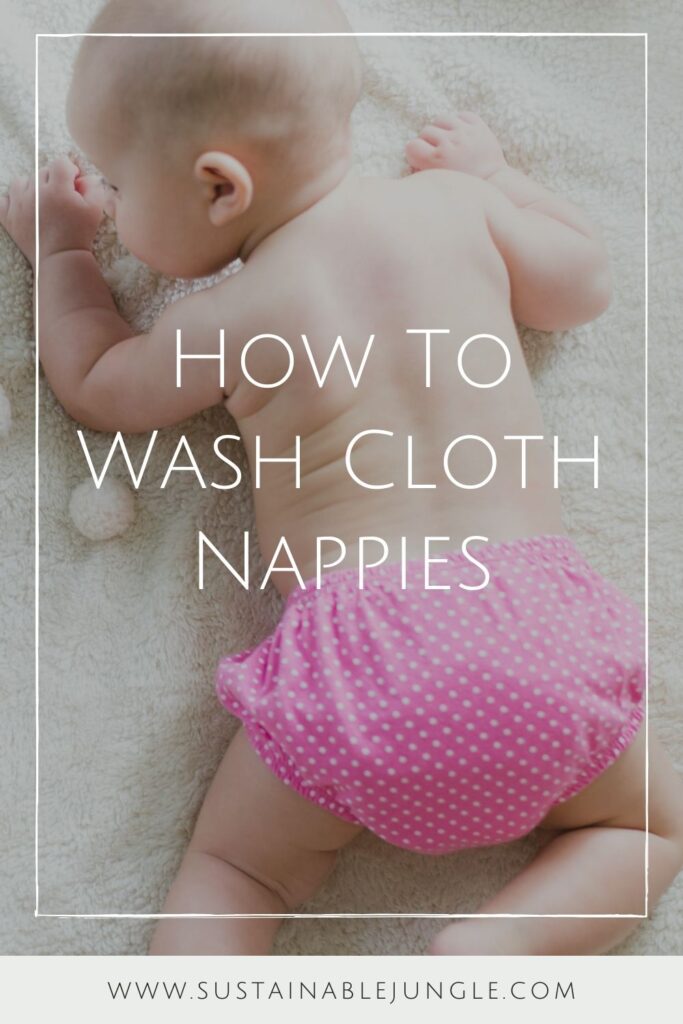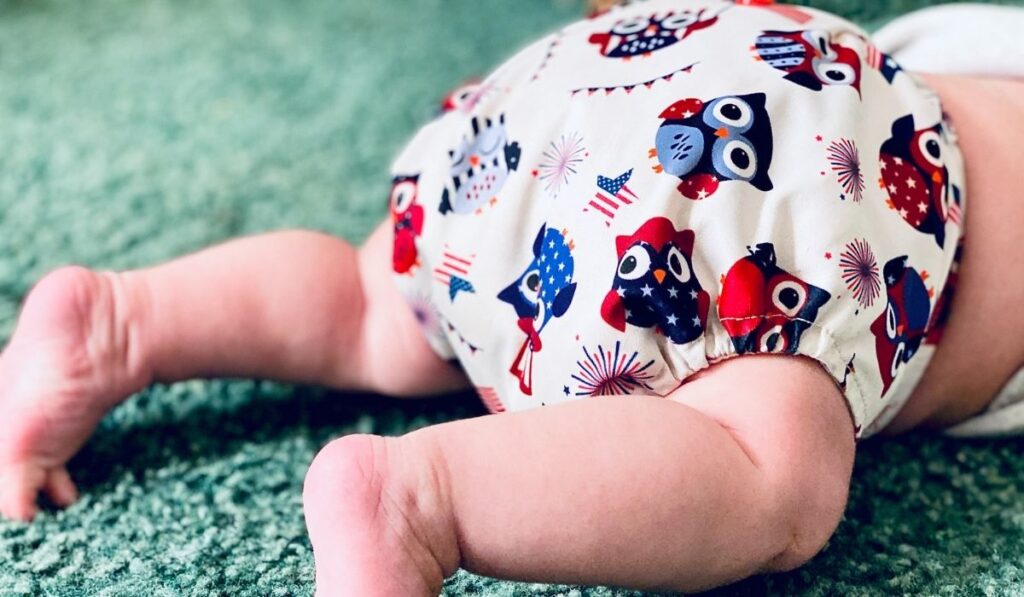
How To Wash Cloth Nappies Like An Eco-Parent Pro
Wondering how to wash cloth nappies without making a mess of it?
You’re not alone.
It’s a common stumbling block for parents facing the “disposable vs cloth” diaper dilemma.
Thoughts of washing cloth nappies needn’t keep you up at night—your little one will be doing plenty of that on their own—but what disposable diapers are doing to the planet might.
Every minute, more than 300,000 disposable nappies are thrown away, making diapers the third most common consumer item found in landfills—where they sit for 500 years before degrading.
By the time your baby is potty trained, they’ve used 4000-6000 of them.
For that mountain of reasons, reusable diapers (AKA cloth nappies) are the most eco friendly diapers a planet-minded parent trying to raise a zero waste baby can buy.
We promise they’re not as scary as they sound.
With a little bit of nappy know-how and a solid routine in place, you’ll be dishing out freshly washed diapers in no time.
Kudos to the all-knowing experts at Clean Cloth Nappies who’ve helped us get to the bottom of this issue, though we’ve added many of our own tips and tricks picked up along the parenting path.
Read on for the full scoop on removing poop as we navigate the ins and outs (or inserts and covers) of how to wash reusable nappies in five simple steps.
1. WHICH DETERGENT TO USE FOR MODERN CLOTH NAPPIES
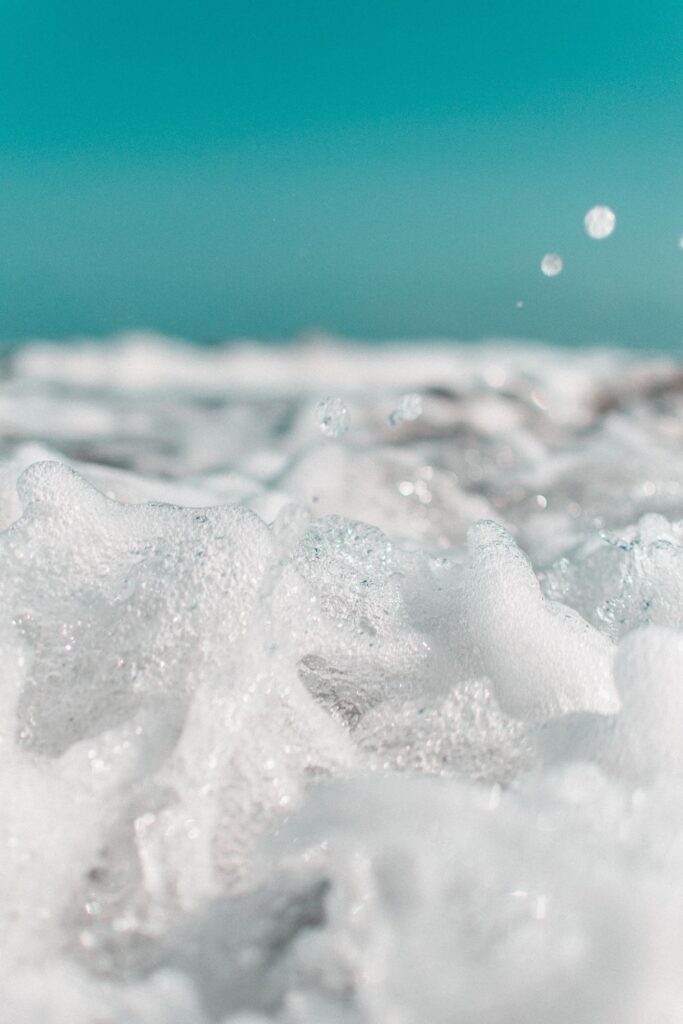
Detergent-wise, you want to use something strong enough to do the job but gentle on your little one’s skin. Gentler on the planet is ideal too.
Most likely, your favorite zero waste laundry detergent will do just fine.
Using an eco detergent avoids additives found in most regular detergents, which can build up on the nappy fabric, affect the absorbency, and make them more difficult to clean.
Fabric softeners should also be avoided for this reason—not to mention the chemicals their highly absorptive baby skin will be exposed to.
Having said that, getting the detergent right for washing cloth diapers can take a bit of trial and error, especially if you’re opting for a more planet friendly solution.
For UK, AU, and NZ readers, Clean Cloth Nappies (CCN) have a detailed index of suitable eco friendly laundry detergents available for subscribers.
How to remove stains from cloth nappies
For stain removal needs, sunshine is your friend.
Simply put lemon juice and salt on the stain, and let it sit out in the sun. Leaving sit in the sunshine alone can help fade stains as well, though not as instantaneously.
If you do need something more (and oftentimes you will), you can add an eco friendly stain remover (or something simple like vinegar for colors or peroxide for whites) along with your detergent.
In Australia, ZeroCo’s laundry detergent combined with Simply Clean’s stain remover works well for us (both tested by CCN).
2. HOW TO STORE REUSABLE NAPPIES
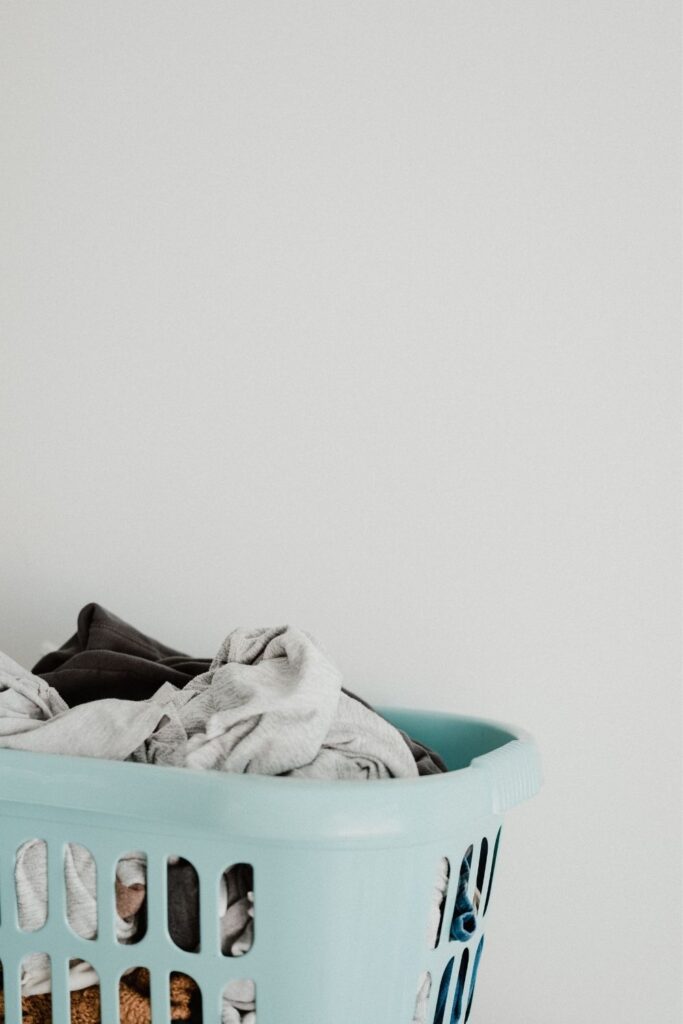
One of the biggest keys to dirty nappy care is properly storing them in between washes.
It’s all about the “dry pail” method.
Soaking nappies can damage the PUL and elastics so it’s best to keep nappies as dry as possible in between washes.
Tempting as it may be to put a lid on dirty nappies, it’s recommended to use an aerated basket rather than a sealed bin or wet bag. Good ventilation stops nappies from festering and regular pre-washing will take care of offensive odors.
You can utilize some low waste living thinking here and repurpose an old plastic laundry basket or similar.
Before you fling that nappy into the wash basket, however, check the contents.
If it’s just a wet one, put that straight in your basket. If your little one’s not onto solids yet and you’ve only got milky poo to contend with, that can go straight in, too.
If your little one is onto solids, however, a few extra steps are involved.
How to clean poop from cloth nappies
You need to get any solid poop off before dry pailing nappies.
You can shake it off into the toilet, use toilet paper, or scrape it off. A dedicated repurposed spatula or butter knife works well for this—just make sure you store it in the bathroom!
Some parents who have jumped on the zero waste toilet paper train use a handheld bidet to spray off excess poop. A removable shower nozzle works, too.
Then pop your poop-free nappies into your aerated basket ready for prewash.
Pro Parenting Tip: Remember to close velcro tabs to stop them from attaching to other nappies in the wash and creating a giant ball of nappies. Likewise, snap buttoned nappies shut to avoid them getting damaged.
3. HOW TO PREWASH CLOTH DIAPERS
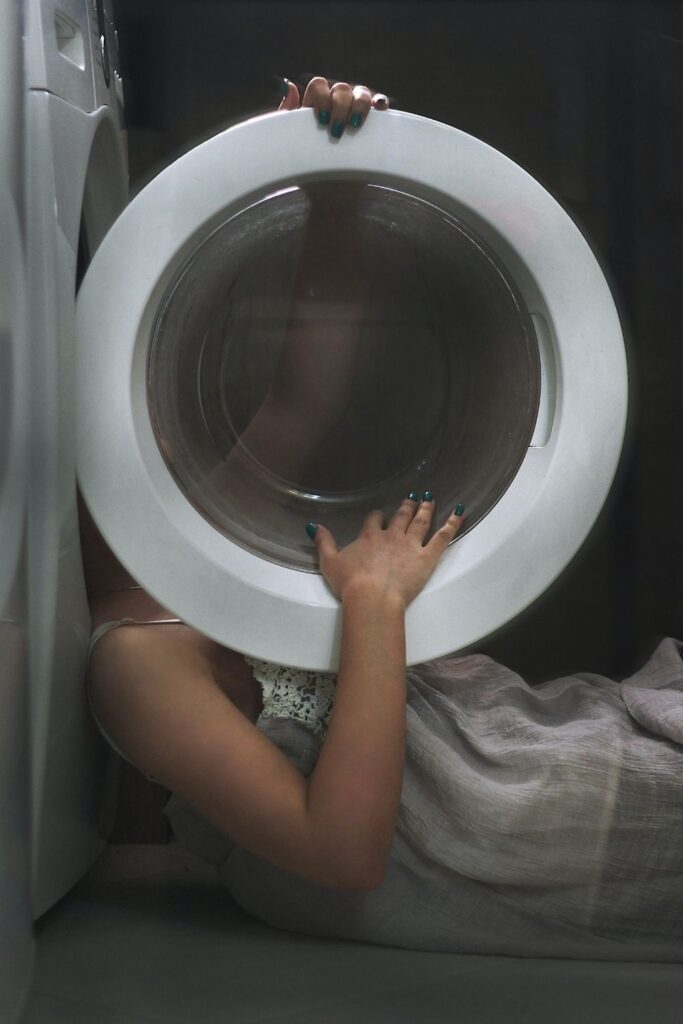
Regular pre-washing prevents all kinds of problems, from mold to stains to perpetual stink. This step essentially removes the poop.
Ideally, you want to pre-wash nappies every day. Every two days is okay for some nappies, but it’s recommended to do it daily if using nappies with multi-layered inserts.
There’s no need to dry the nappies between pre-washes. Just put them in an aerated basket and, once you build up enough for a full wash load, move them into the main wash.
This may feel extreme but it’s worth the effort and the reusable diaper washing routine quickly becomes part of everyday life.
How to prewash cloth diapers
Think hot but short for the pre-wash. They’ll get a longer wash later.
Wash at 40°- 60°C (100°- 140°F) for 30 minutes using half the amount of detergent you’d normally use for a heavily soiled load.
To reduce our carbon footprint at home, we’re used to lowering the wash temperature to cold, but nappy washing is one situation where it’s okay (and in fact far safer) to crank up the heat.
If washing PUL (polyurethane laminate) nappies or covers, don’t forget to use a Guppy Bag to stop microplastics from escaping into waterways.
4. HOW OFTEN DO YOU WASH CLOTH DIAPERS
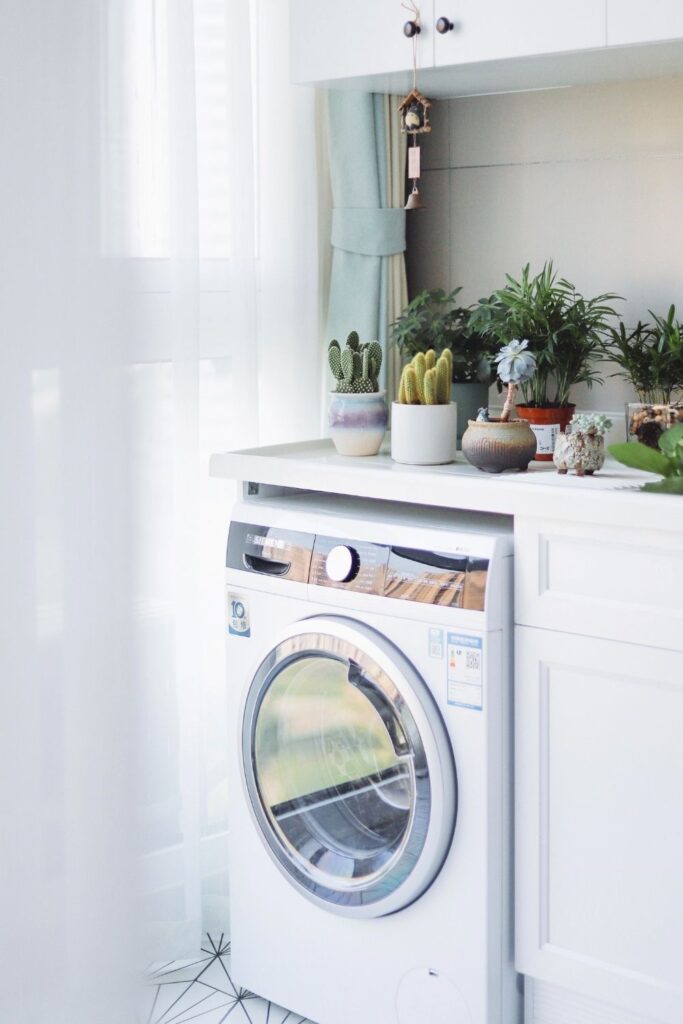
If you’re wondering how often to wash cloth diapers, the general rule of thumb for the second wash is every 2-3 days.
Again, wash at 40°- 60°C (100°- 140°F) but this time for two hours and with the full amount of detergent you’d use for a heavily soiled load. Plus any stain remover you’d like to (or need to) add.
A 60°C wash usually provides better results than a 40°C one, but you can experiment and see what works for you.
Again, don’t forget the Guppy Bag. We recommend using two to avoid one getting too full and unbalancing the machine.
How to wash diapers in hard water
If you’re in a hard water area you may need to use a little extra detergent to get enough cleaning power, but otherwise, the process is the same.
How to wash cloth nappies for the first time
How you wash nappies for the first time depends on whether you bought them new or pre-loved.
New nappies can be washed once with laundry detergent and you can just throw them in with your regular laundry. Remember not to use any fabric softener (even eco-friendly fabric softeners aren’t necessary). Though if you can’t get past that fragrance, try one of the fabric softener alternatives.
How to wash used cloth nappies
Wash preloved nappies on as hot a wash as possible. Depending on how well they’ve been cared for, they might also need to be “stripped”.
A strip wash is a more intensive wash using baking soda and vinegar or bleach. It can help solve issues with ammonia and detergent build-up but doesn’t need to be done regularly.
How to wash cloth nappies by hand
There may be times traveling or camping (or if your washing machine breaks down or you simply don’t use one) when you need to wash cloth nappies by hand.
In these situations, it’s better to wash every day so the task doesn’t get (pardon the pun) out of hand.
You can also wash covers separately as they’re much quicker and easier. For the liners, here’s what to do:
- First Wash: Fill a bucket with warm water and laundry detergent, pop the nappies in, and give them a good splosh around with a plunger or your hand. You can leave them to soak for up to 30 minutes..
- Second Wash: Drain the bucket and fill again with clean hot water and more detergent. Again, toss the nappies around for a good few minutes or leave them to soak again.
- Rinse Twice: Drain the bucket and fill it with cold water. Make sure all the detergent is removed from the fabric by sploshing the nappies around again. Then drain, re-fill the bucket with cold water, and repeat.
- Dry: When finished, squeeze out the water and hang dry as usual (see below for more on drying cloth diapers).
5. HOW TO DRY CLOTH DIAPERS
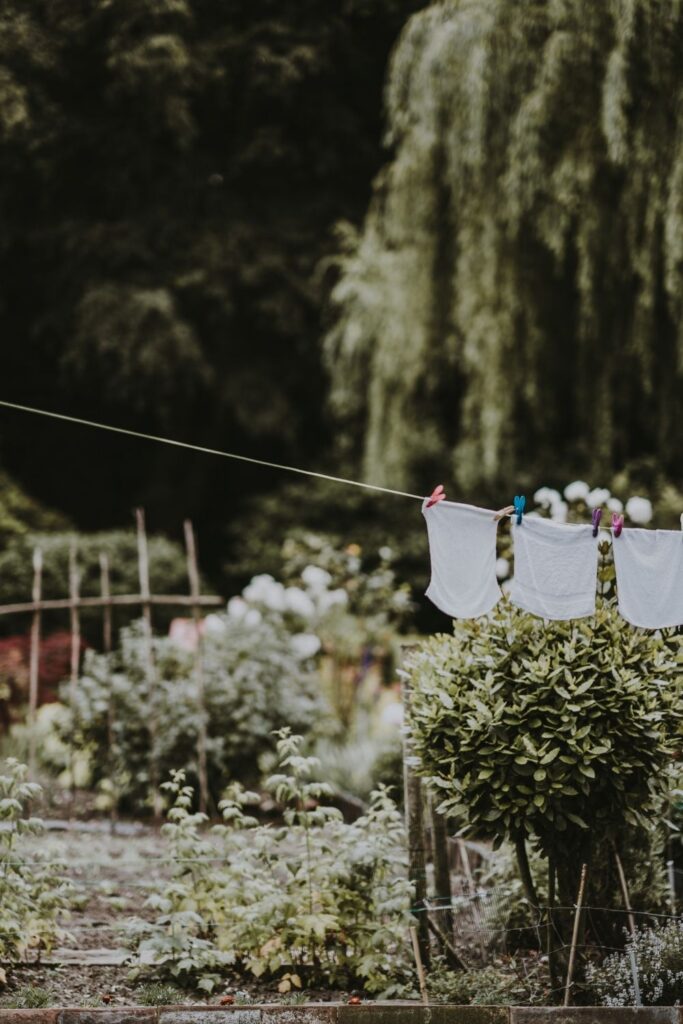
Hanging out to dry in fresh air and sunshine helps to keep nappies fresh as a daisy and has the added bonus of naturally bleaching stains.
However, sunlight can damage PUL covers and shells so an indoor drying rack is recommended for these.
Or try hanging them with the PUL side facing away from the sun or in a shady location outside.
In winter, hanging the reusable diapers and inserts near a heater seems to work well.
6. MORE TOP TIPS FOR HOW TO WASH CLOTH DIAPERS
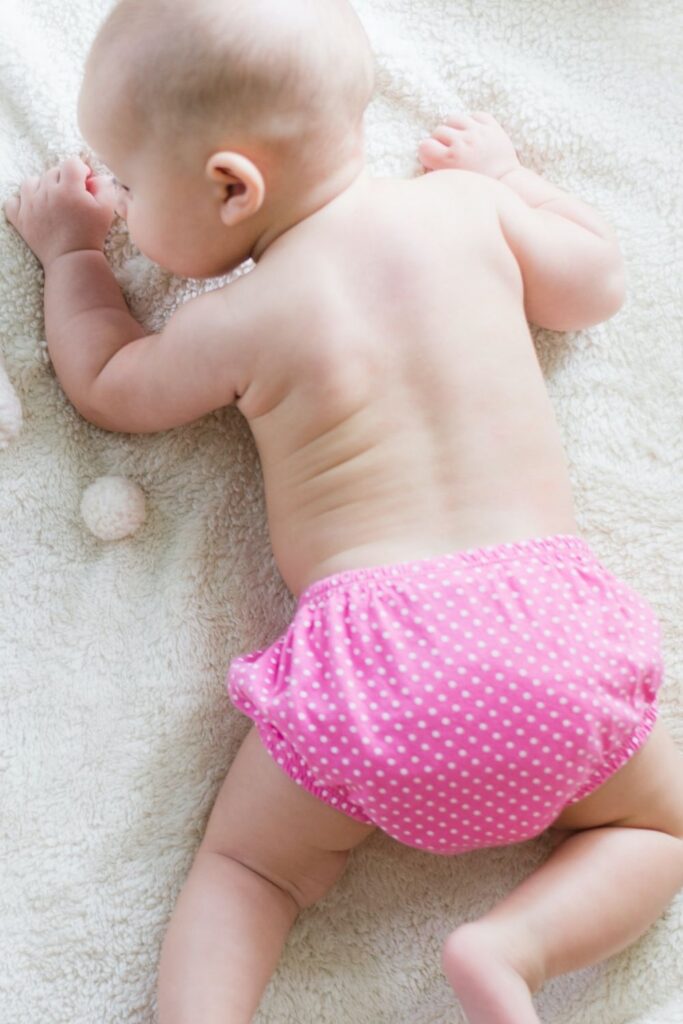
Parenting is a learning curve to say the least, and we hope our blunders can help you.
Here are some extra tips and tricks we’ve picked up on our own nappy washing adventures:
Routine is everything
Changing a nappy can be quite an adventure in itself. If you throw something reusable into the mix, it can feel like you’ve really got your hands full (as if they didn’t feel full enough already!).
It’s important to get a solid routine in place to avoid getting bogged down by mountains of stinky nappies.
For example: It’s best to wash night nappies first thing in the morning (to avoid the build-up of ammonia), so you might try slotting a prewash into your morning routine.
Put on the eco kettle, nail the prewash, make coffee, sorted!
Repurpose what you can
Plastic is convenient as it’s easy to clean and doesn’t rust, but avoid buying new.
From poo scrapers (bet that’s something you never thought you’d need) to storage baskets and handwashing buckets, there are plenty of recycling and repurposing opportunities to be had.
Know what to do when you’re on the go
When you’re out and about, having the right tools for the job makes cloth nappy life a lot easier.
Wet bags are helpful for storing wet and dirty nappies on the go. Just make sure you don’t forget about them and deal with them promptly upon getting home. There are some horror stories out there about finding dirty nappies weeks later…
It’s a good idea to have two wet bags, so you have a spare when one is in the wash. Oh and don’t forget to bring along some eco friendly baby wipes.
More resources on how to wash cloth nappies
You might find that there’s a cloth diapering group for your local area. Either a peer-to-peer parent support group or a local business that offers advice and education.
For online resources, we recommend:
- Clean Cloth Nappies (UK, AUS, NZ) as well as their Facebook Group
- All About Cloth Diapers (US)
- South African Cloth Nappy Users (South Africa) as well as their Facebook Group
- Cloth Diapering Mamas Facebook Group (Global)
Final Thoughts On How To Wash Cloth Diapers
Your laundry routine needs to work like a well-oiled machine in order to keep the supply of clean, dry nappies flowing.
…and so you don’t fall off the wagon back into the land of disposable biodegradable nappies, which is all too easy when navigating the already-challenging world of new parenthood.
Like most new things, once you get into the swing of it, washing cloth nappies becomes second nature.
And the best part – you can sleep easy (as much as your little one allows at least) knowing that you’re reducing plastic pollution and excess landfill waste .
Pay it forward by helping a fellow eco parent out with their cloth nappy endeavors by sharing this article with them.
